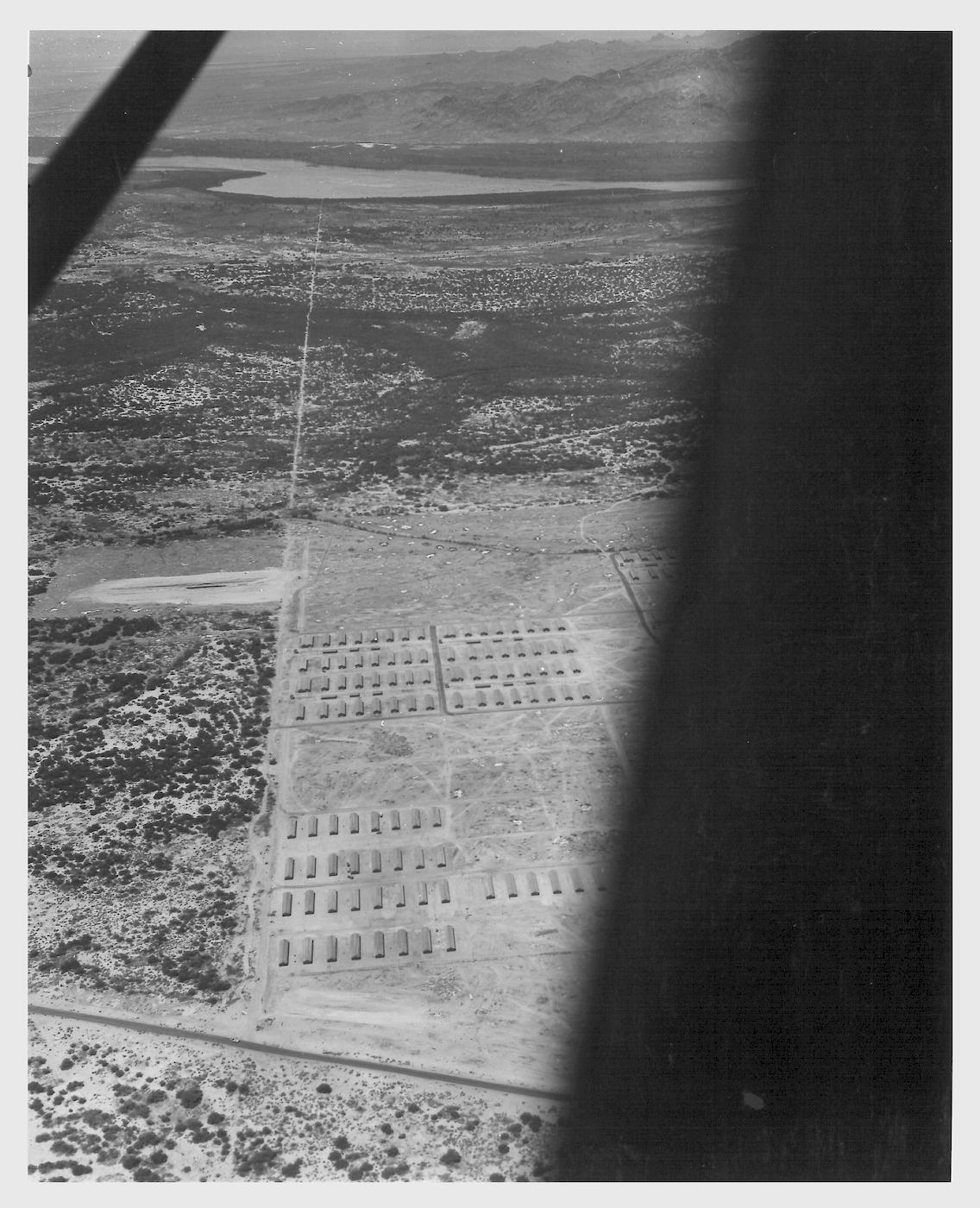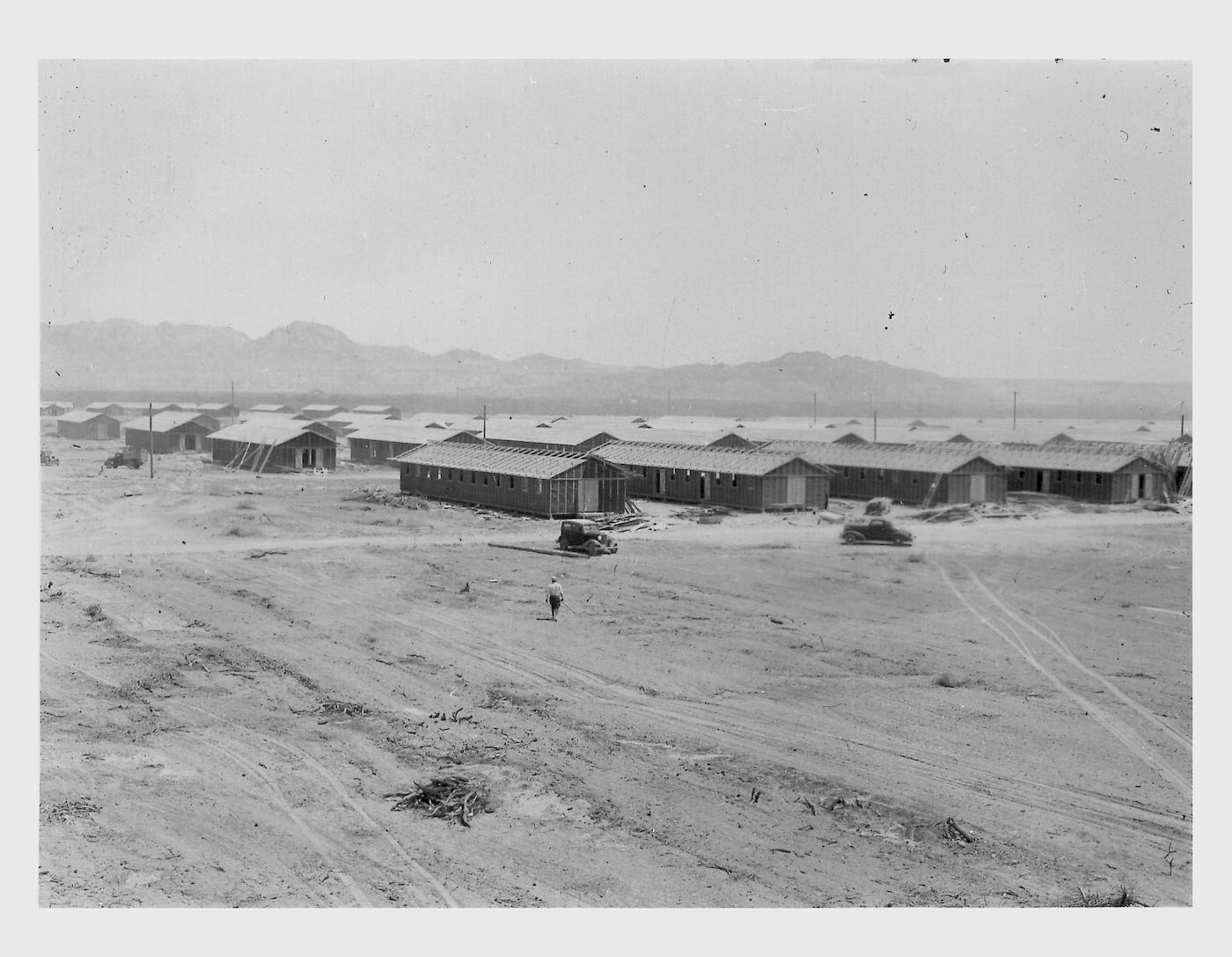The following photos are from a collection housed at Bancroft Library at the University of California at Berkeley. The photos span from 1942-1945 at various internment camps around the U.S. operated by the War Relocation Authority.
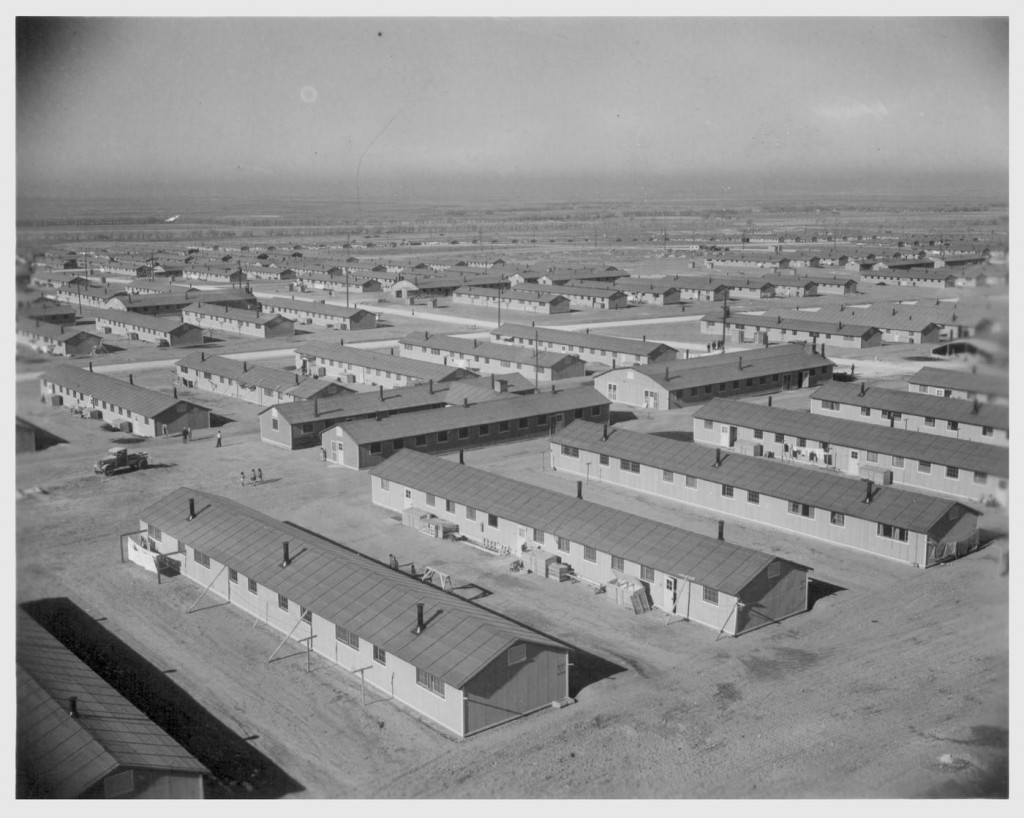
Overlooking the Amache Relocation Center, near Granada, Colorado. In the foreground is a typical barracks unit consisting of 12 six room apartment barracks buildings, a recreation hall, laundry and bathrooms, and the mess hall. -- Photographer: Parker, Tom -- Amache, Colorado. 12/9/42

Manzanar, Calif.--Street scene looking east toward the Inyo Mountains at this War Relocation Authority center. The children are coming to their barrack homes from play school. Each family has one room to live in in these barracks. There is no running water in the barracks so all the families in one block use a central bath house. The barracks are heated by wood burning stoves. -- Photographer: Lange, Dorothea -- Manzanar, California. 6/29/42
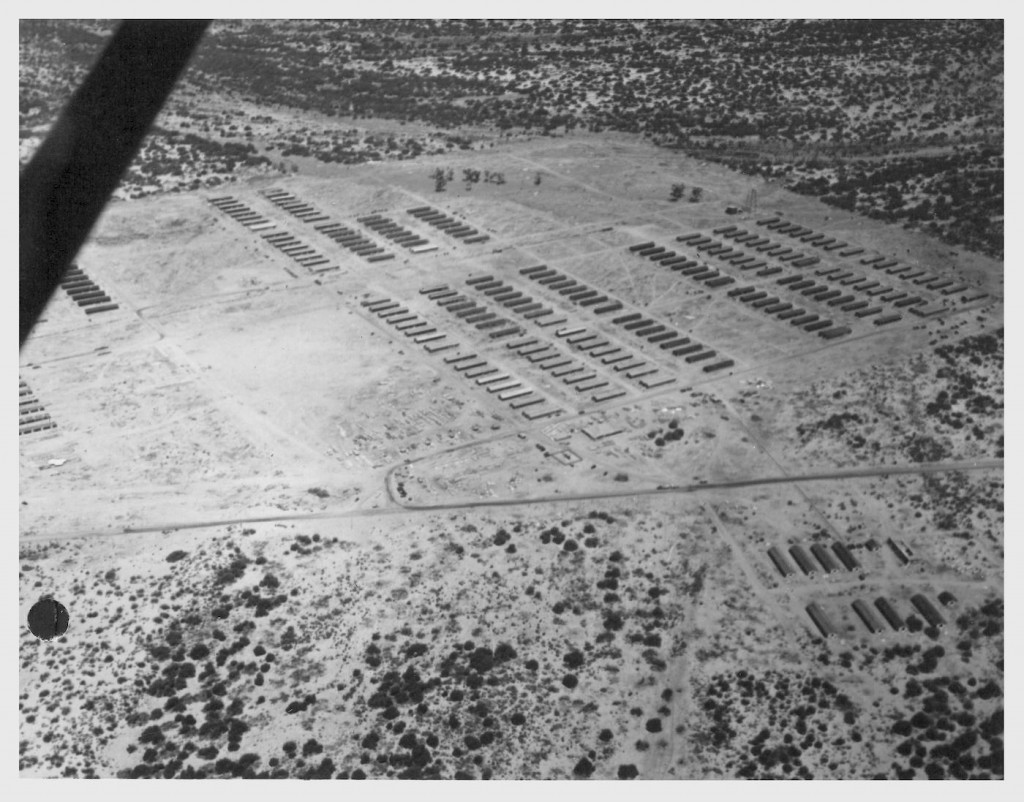
Aerial view of Colorado River Relocation Center for persons of Japanese ancestry evacuated from the West Coast. -- Photographer: Clark, Fred -- Poston, Arizona. 5/25/42
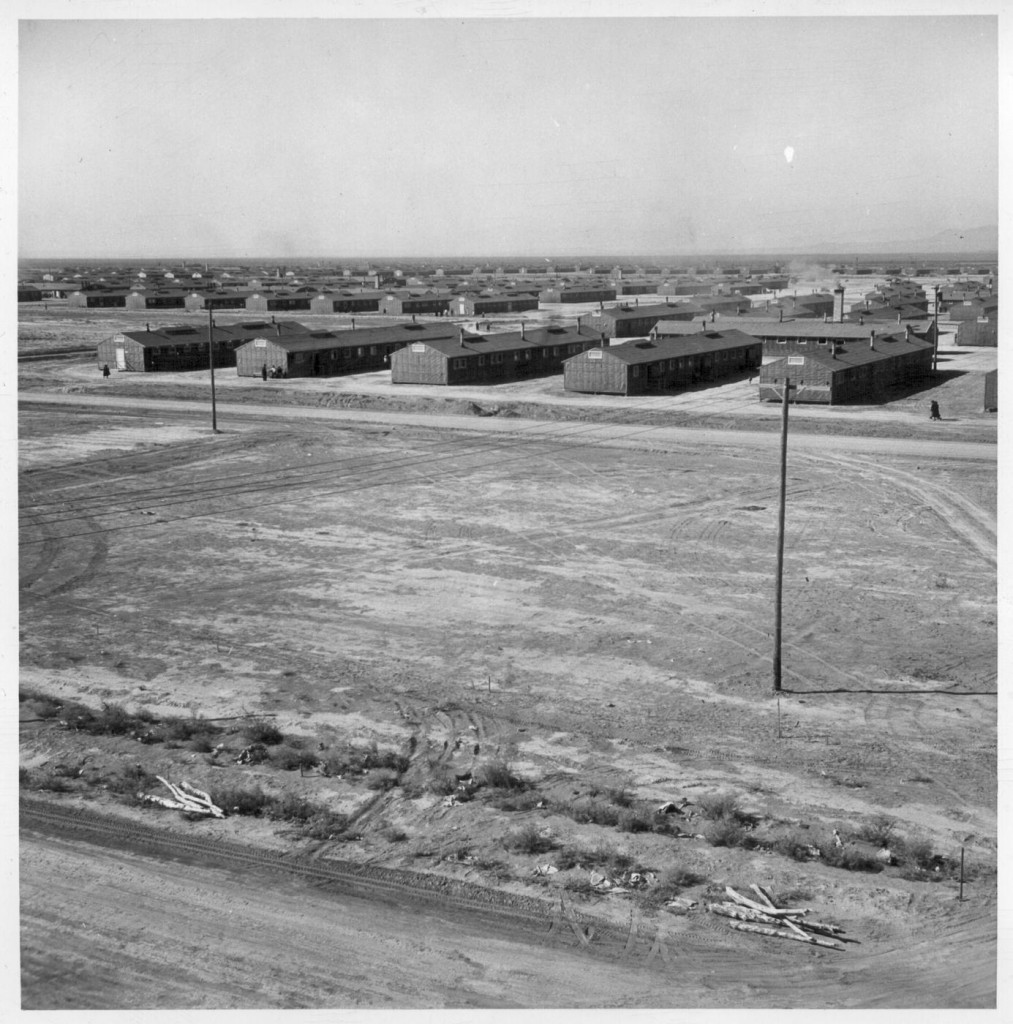
A typical barracks with a section of the Topaz Relocation Center. -- Photographer: Parker, Tom -- Topaz, Utah. 10/18/42
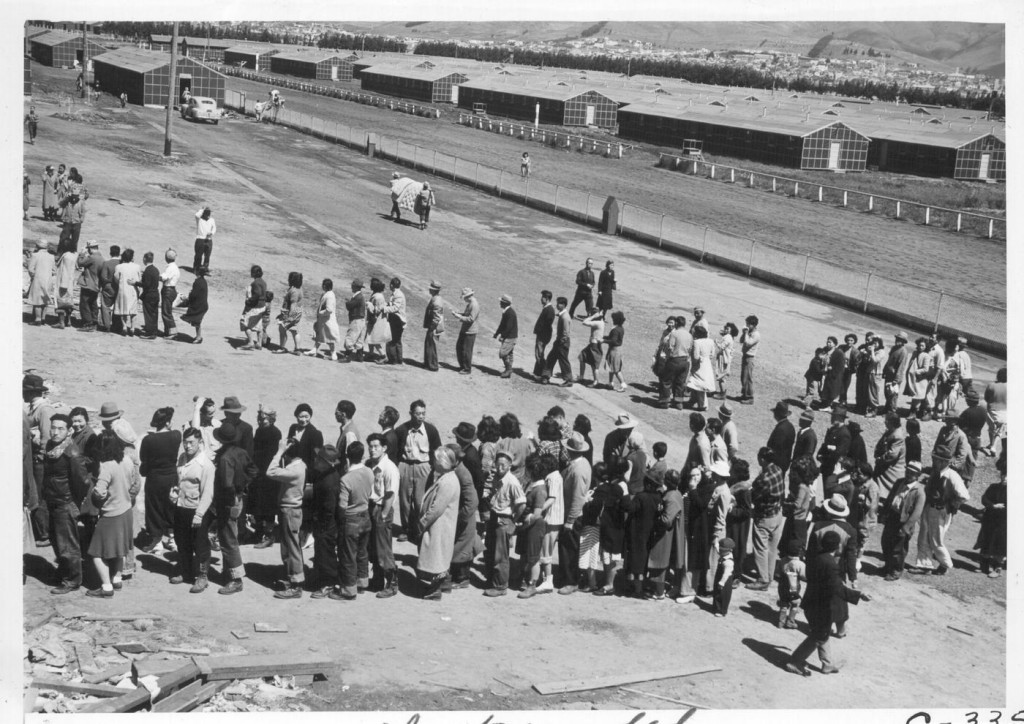
This assembly center has been open for two days. Bus-load after bus-load of evacuated persons of Japanese ancestry are arriving this day. After going through the necessary procedure for registration, they are guided to the quarters assigned to them in the barracks. Only one mess hall was operating on this day. Photograph shows line-up of newly arrived evacuees outside the mess hall at noon. Note barracks in background, newly built, in which family units are housed. There are three types of quarters in this assembly center, of which this is one. The wide road which runs diagonally across is the former race track. Industrial South San Francisco is shown in the background. -- Photographer: Lange, Dorothea -- San Bruno, California. 4/29/42
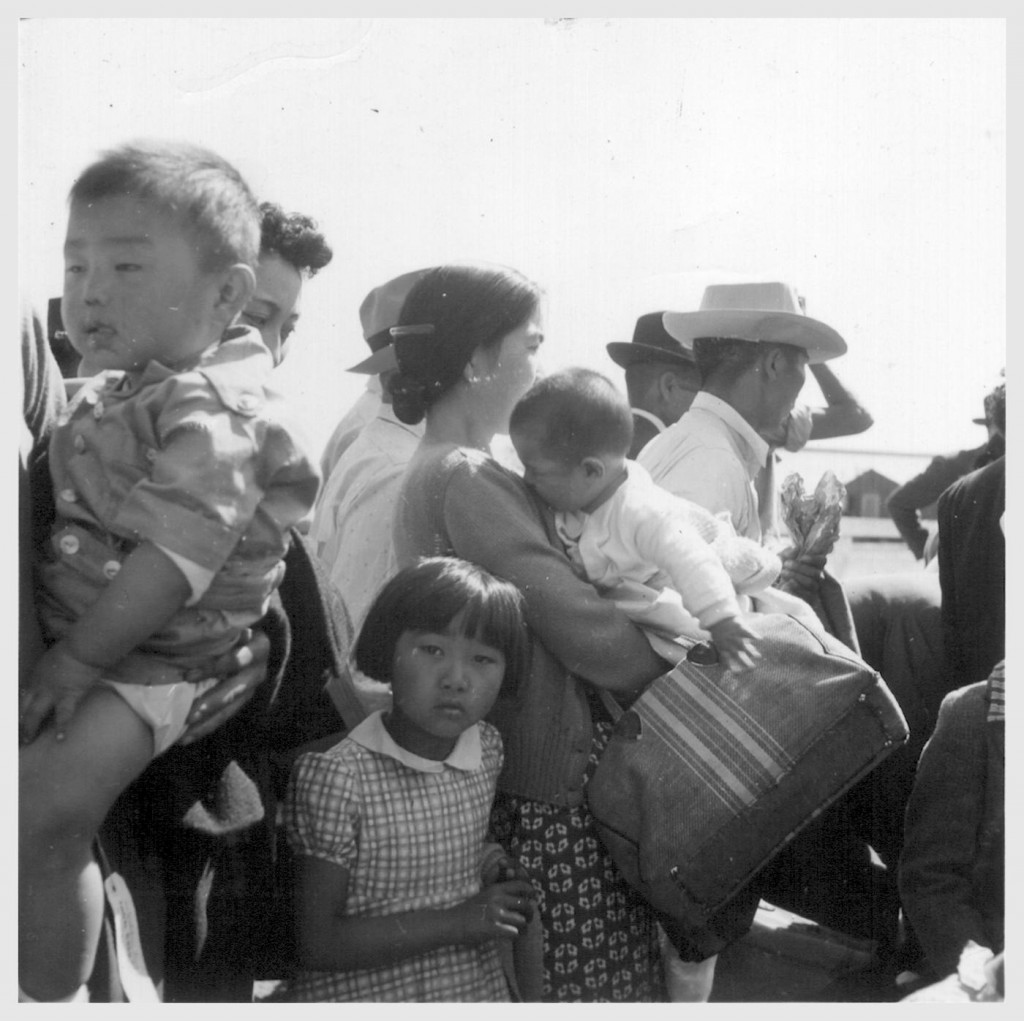
Turlock, Calif.--Evacuees of Japanese ancestry waiting their turn for baggage inspection for contraband, upon arrival at this Assembly point. They will then be assigned places in the barracks until transferred to a War Relocation Authority Center to spend the duration. -- Photographer: Lange, Dorothea -- Turlock, California. 5/2/42
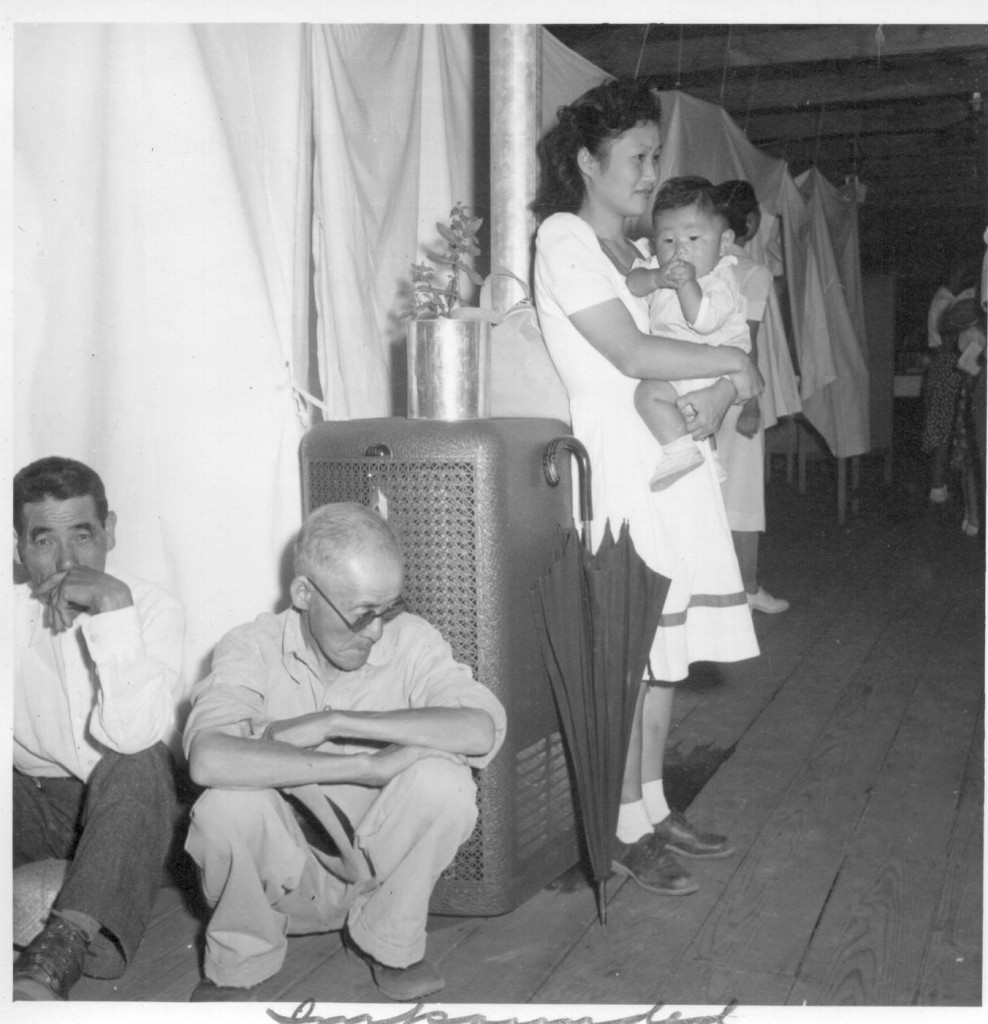
A typical interior scene in one of the barrack apartments at this center. Note the cloth partition which lends a small amount of privacy. -- Photographer: Lange, Dorothea -- Manzanar, California. 6/30/42
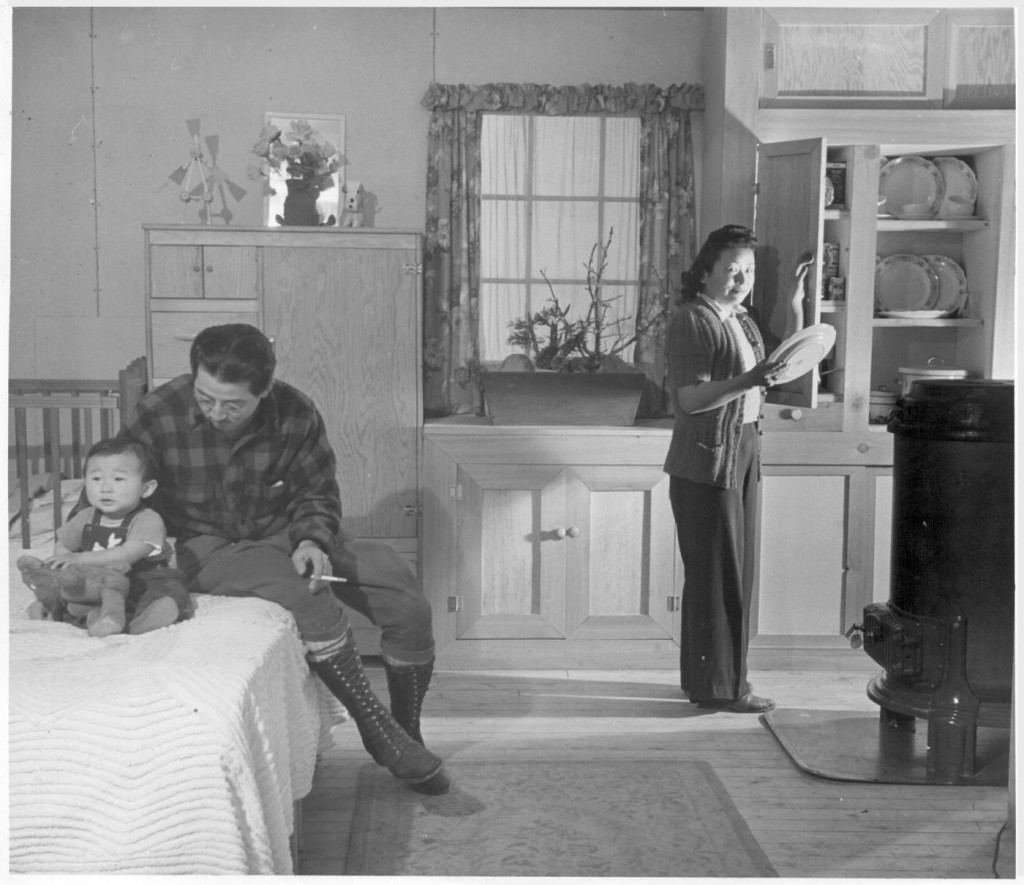
A few pieces of scrap and some additional mail order lumber, and the ingenuity of skilled hands, have converted a bare barracks room into a home of some comfort. Many residents, such as the young Nisei family shown, have through their own ingenuity, bettered their living conditions within the center. -- Photographer: Parker, Tom -- Heart Mountain, Wyoming. 1/7/43
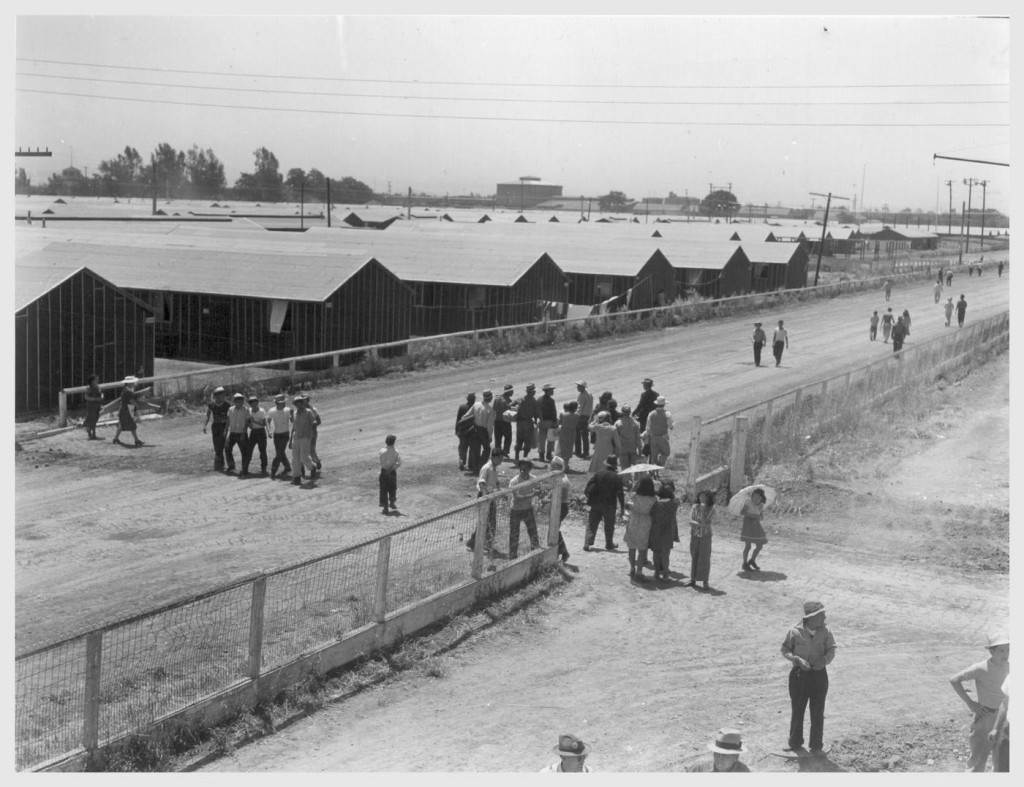
Noon on a hot day at the Stockton Assembly Center, which is a converted fairgrounds. This group of people on the race track are new arrivals who have been registered inspected, medically examined, and are now on their way to their assigned places in the barracks. -- Photographer: Lange, Dorothea -- Stockton, California. 5/19/42
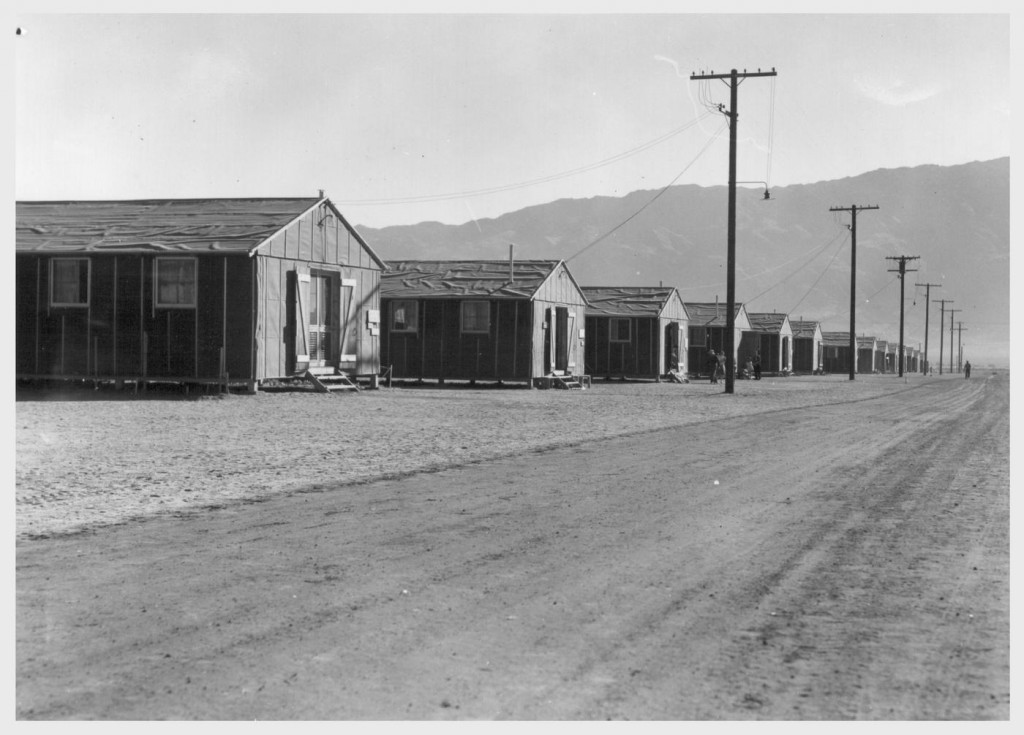
Manzanar, Calif.--Street scene of barrack homes at this War Relocation Authority center for evacuees of Japanese ancestry. -- Photographer: Lange, Dorothea -- Manzanar, California. 6/29/42
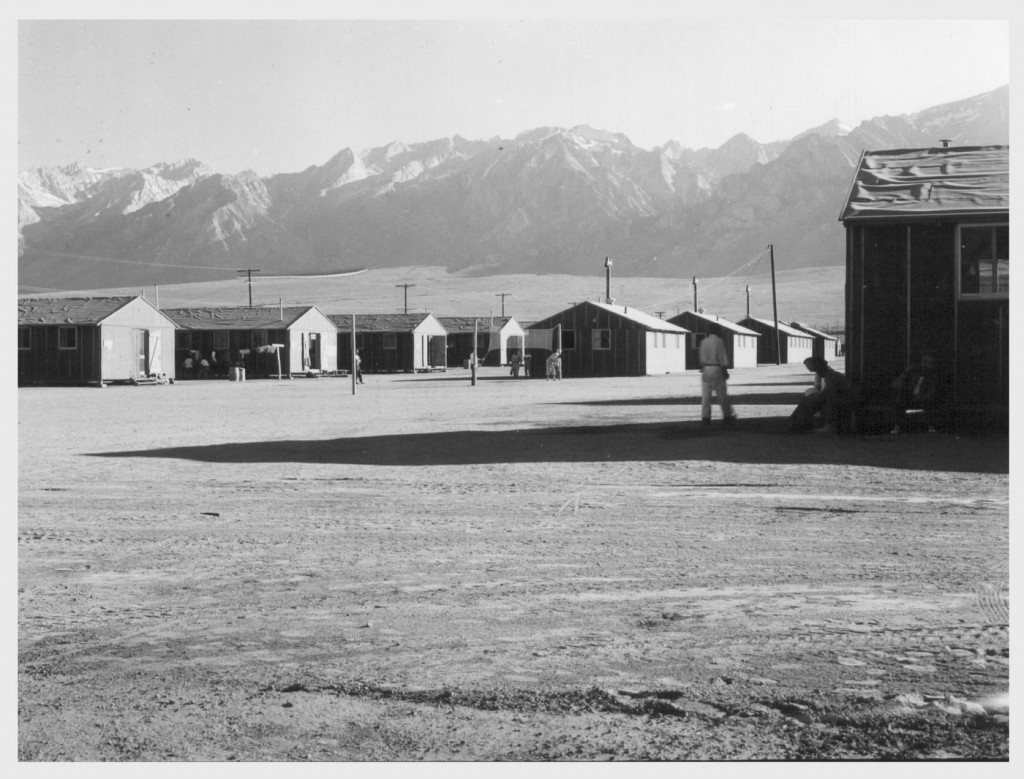
Manzanar, Calif.--Looking west from Mess Hall No. 1. The small square buildings in the center rows of barracks are the laundry and sanitary units. Evacuees of Japanese ancestry are spending the duration in War Relocation Authority centers. -- Photographer: Lange, Dorothea -- Manzanar, California. 7/2/42
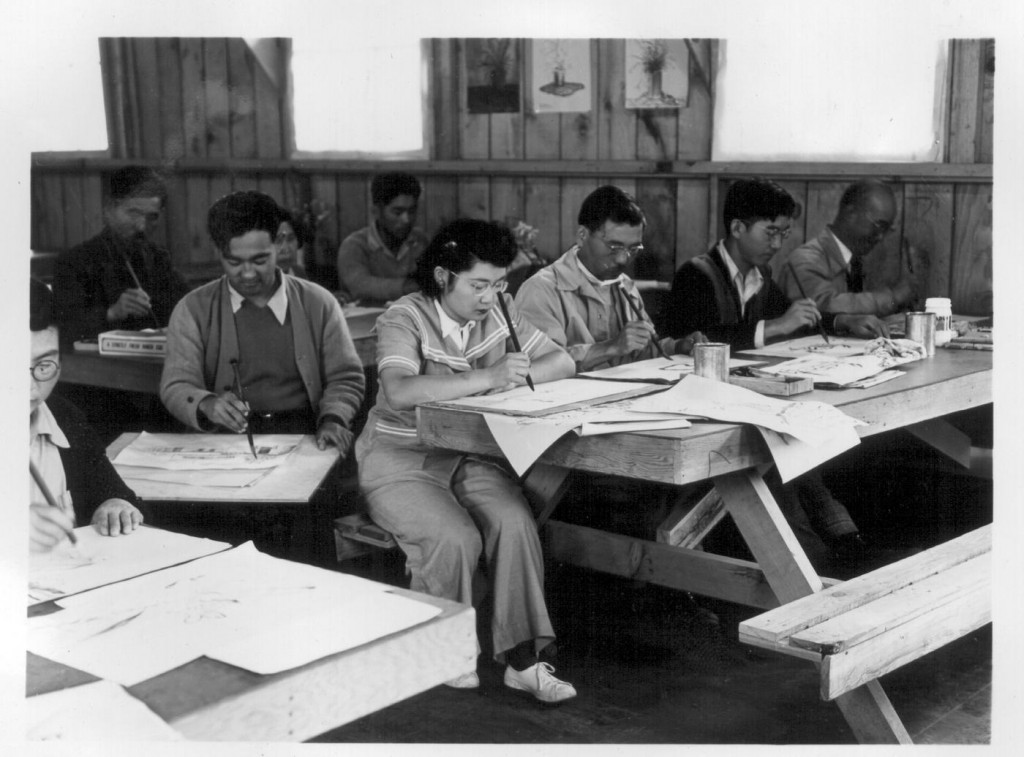
Tanforan Assembly Center, San Bruno, Calif.--An art school has been established at this Assembly Center with a well trained, experienced evacuee staff under the leadership of Prof. Chiura Obata, who before evacuation was associate professor of art at the University of California. This photograph shows part of the morning class learning free hand brush strokes. -- Photographer: Lange, Dorothea -- San Bruno, California. 6/16/42
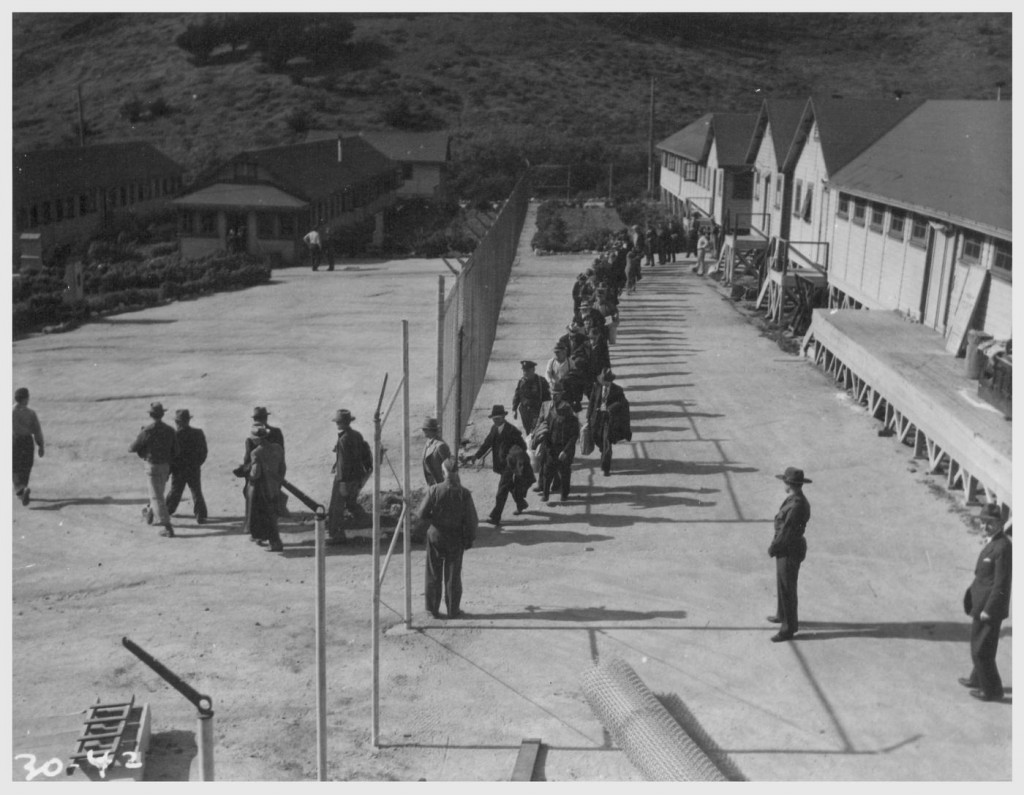
Aliens at Sharp Camp following the evacuation order for persons of Japanese ancestry. This camp was set up as detention station where suspects were held before given hearings. They remained here only a short while, being sent to an internment camp or a relocation center following the hearings. -- Photographer: Albers, Clem -- Sharp Park, California. 3/30/42
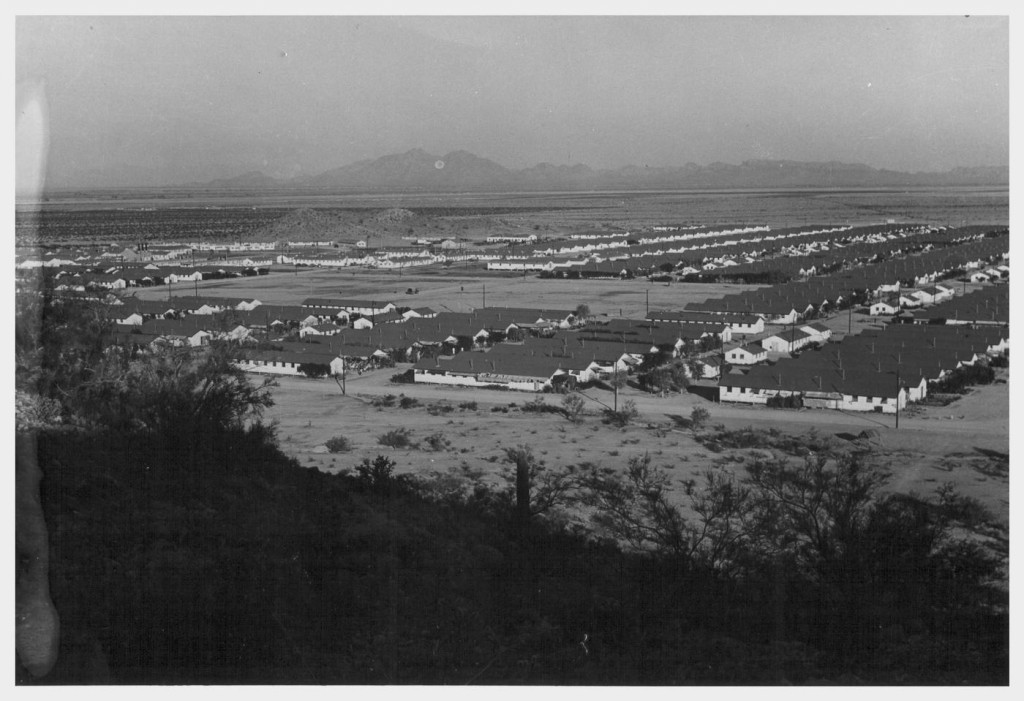
Part of view of Butte camp looking towards block 59-72-74 and hospital in far distance. -- Rivers, Arizona. 12/14/43
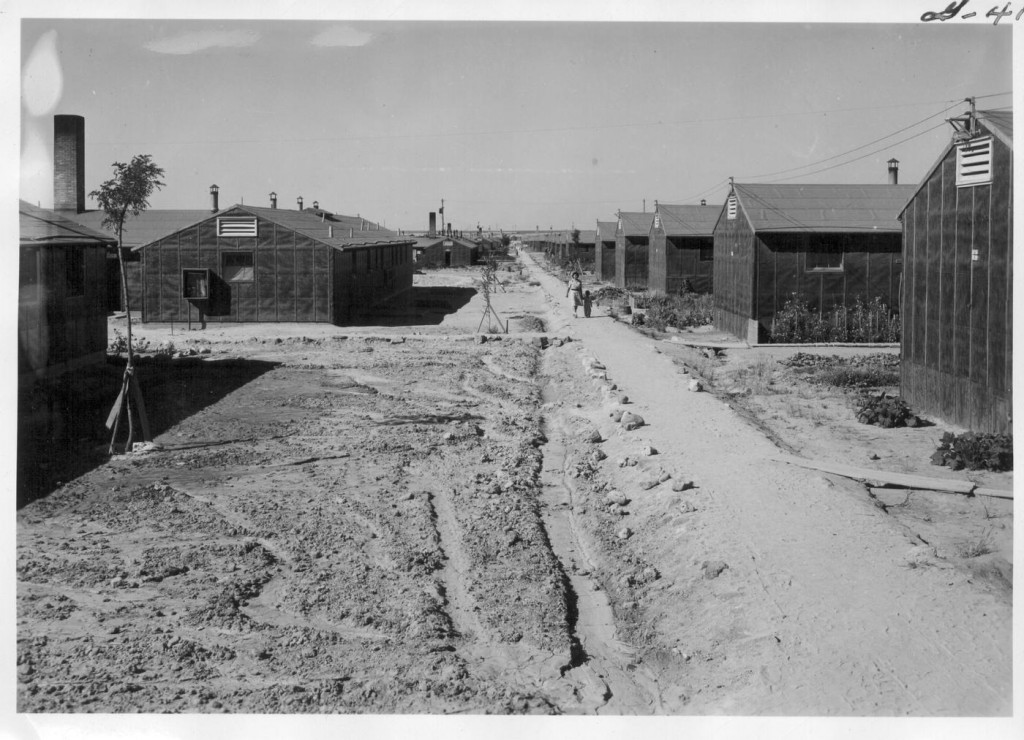
Looking down the rows of barracks westward from block (illegible). At extreme left is a corner of the dining hall where 275 to 300 residents of the block eat. At center background is the sanitation building including showers, lavatories, toilets, and washtubs. Nearly all the residents planted flowers and vegetable gardens in front of their barracks. -- Hunt, Idaho. 8/?/43
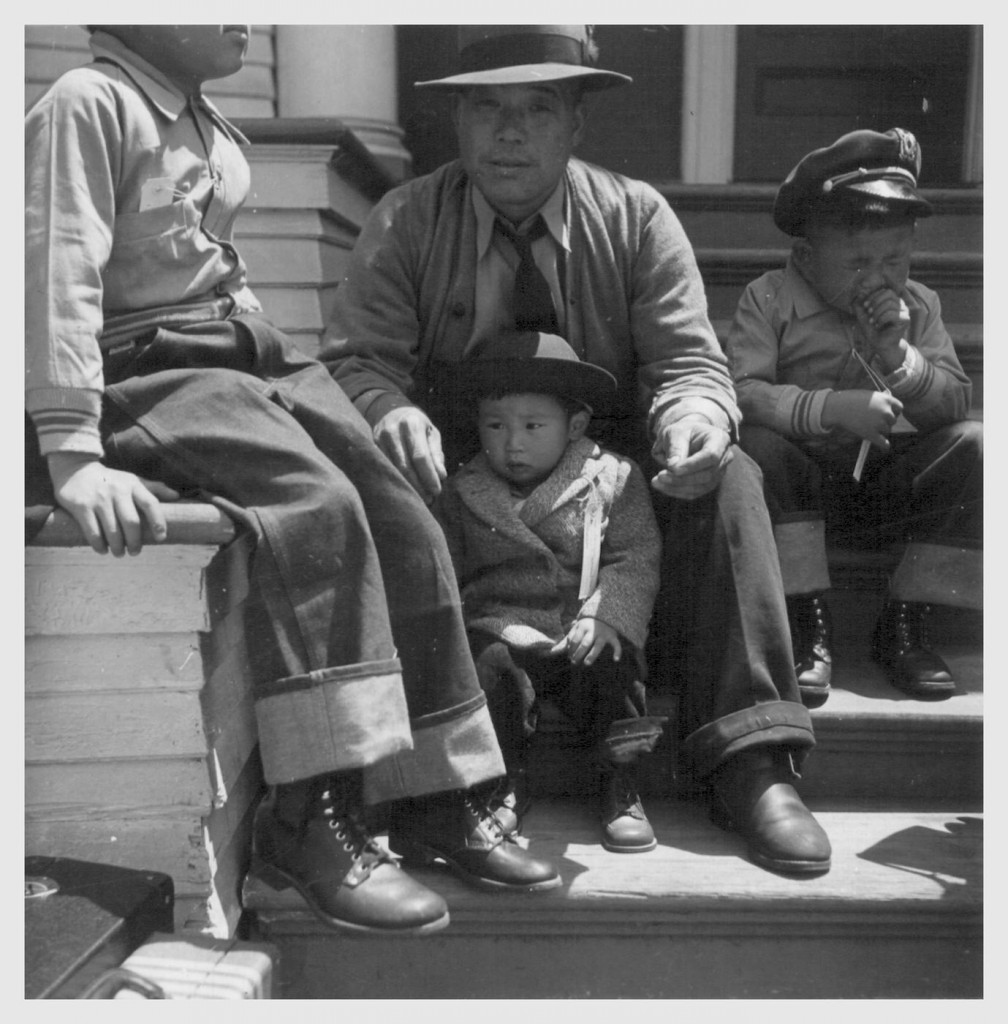
Oakland, Calif. (1117 Oak Street)--Residents of Japanese ancestry waiting for evacuation buses which will take them to the Tanforan Assembly Center under Civilian Exclusion Order No. 28. -- Photographer: Lange, Dorothea -- Oakland, California. 5/6/42

Civilian Exclusion Order No. 5, ordering evacuation of residents of Japanese ancestry, posted in a vacant store window on Grant Avenue in Chinatown. This establishment, like many others in Chinatown, was operated by proprietors of Japanese descent. Evacuees will be housed in War Relocation Authority centers for the duration. -- Photographer: Lange, Dorothea -- San Francisco, California. 4/4/42
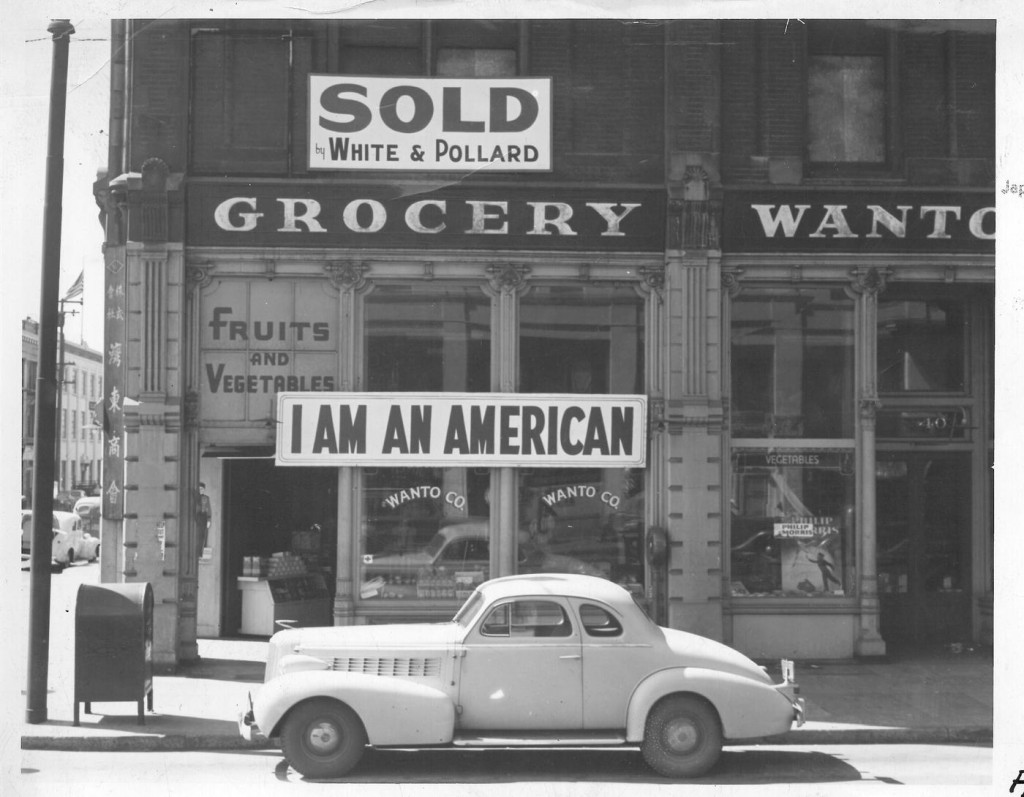
Following evacuation orders, this store, at 13th and Franklin Streets, was closed. The owner, a University of California graduate of Japanese descent, placed the I AM AN AMERICAN sign on the store front on December 8, the day after Pearl Harbor. Evacuees of Japanese ancestry will be housed in War Relocation Authority centers for the duration. -- Photographer: Lange, Dorothea -- Oakland, California. 3/13/42
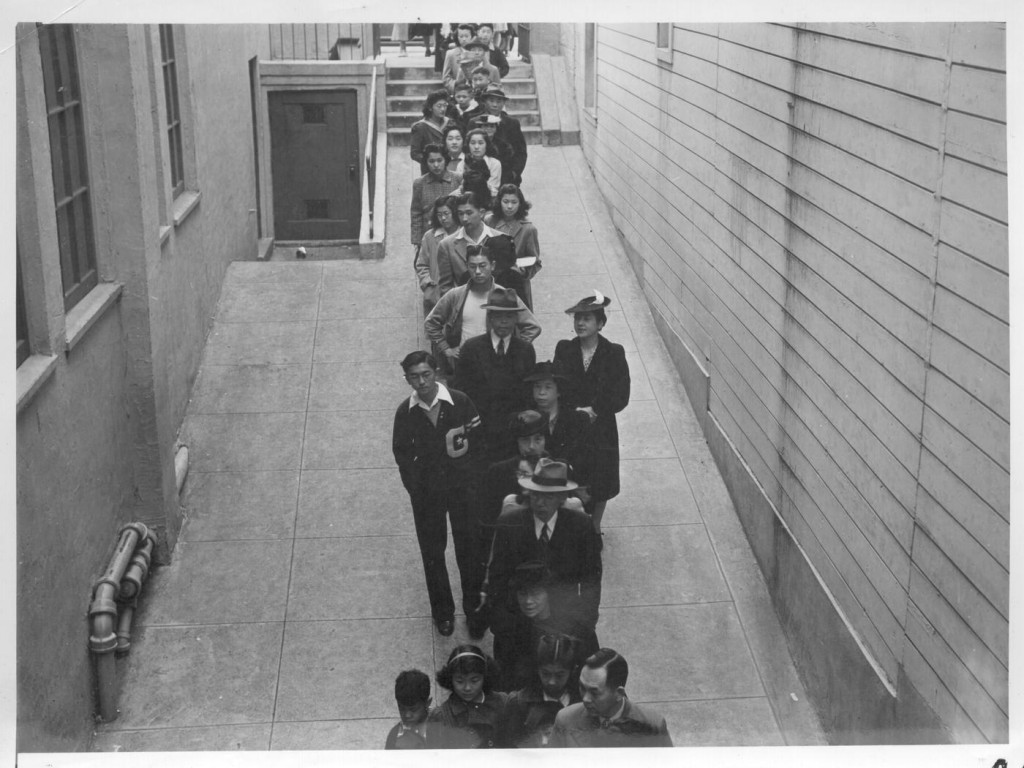
Waiting in line, 2031 Bush St., for voluntary inoculation against typhoid, preceding evacuation of residents of Japanese ancestry. Evacuees will be housed in War Relocation Authority centers for the duration. -- Photographer: Lange, Dorothea -- San Francisco, California. 4/20/42
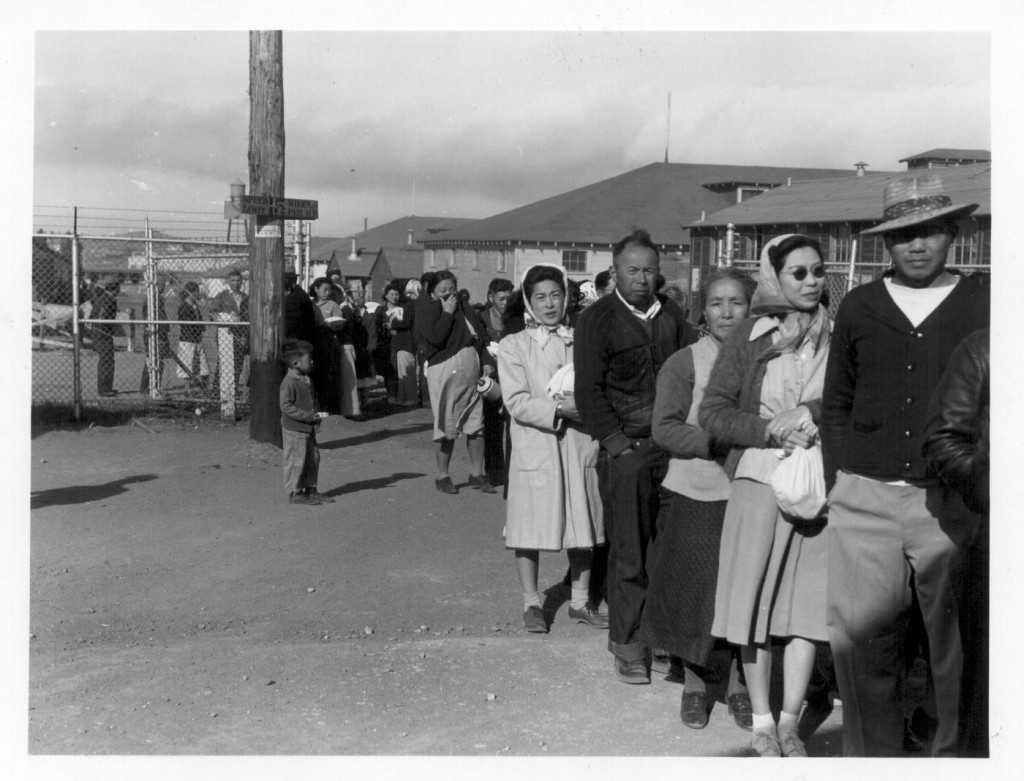
Supper time! Meal times are the big events of the day within an assembly center. This is a line-up of evacuees waiting for the B shift at 5:45 P.M. They carry with them their own dishes and cutlery in bags to protect them from the dust. They, themselves, individually wash their own dishes after each meal, since dish washing facilities in the mess halls prove inadequate. Most of the residents prefer this second shift because they sometimes get second helpings, but the groups are rotated each week. There are eighteen mess halls in camp which, together, accommodate 8,000 persons three times each day. All food is prepared and served by evacuees. -- Photographer: Lange, Dorothea -- San Bruno, California. 6/16/42
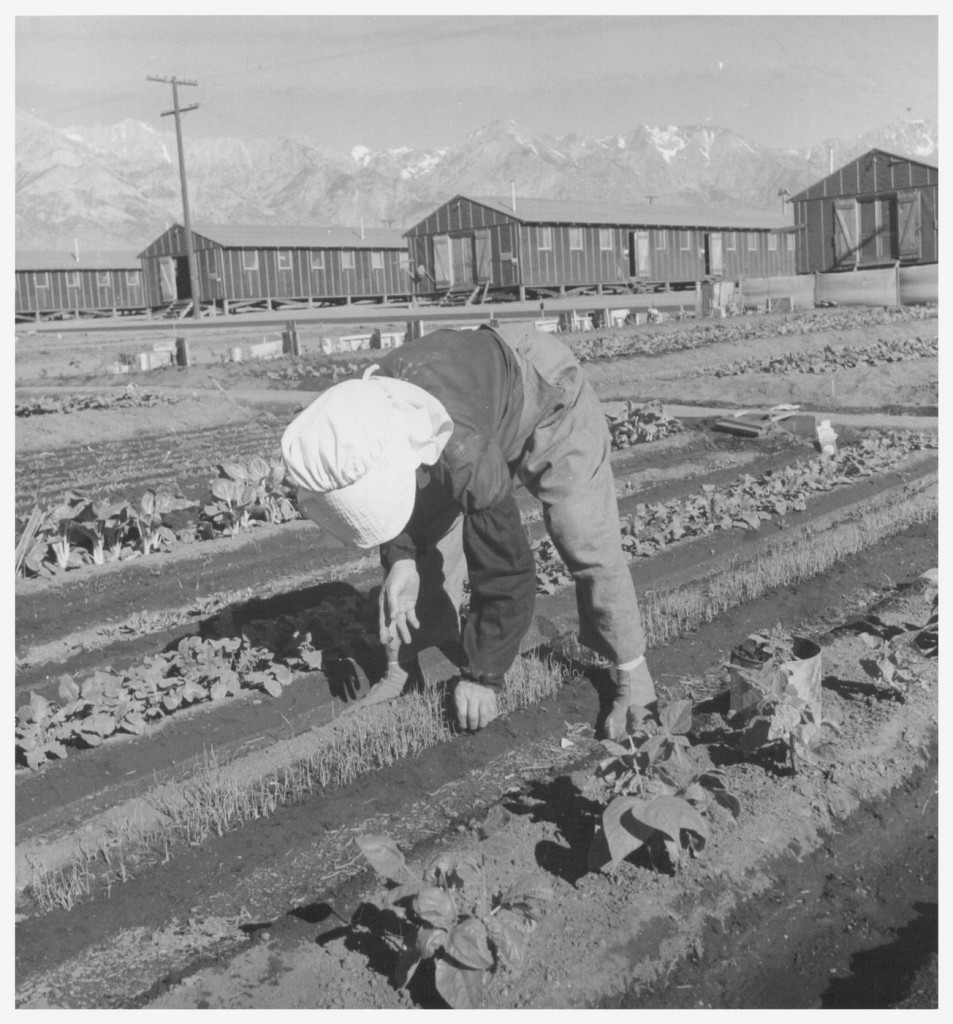
Evacuee in her hobby garden which rates highest of all the garden plots at this War Relocation Authority Center. Vegetables for their own use are grown in plots 10 X 50 feet between rows of barracks. -- Photographer: Lange, Dorothea -- Manzanar, California. 7/2/42
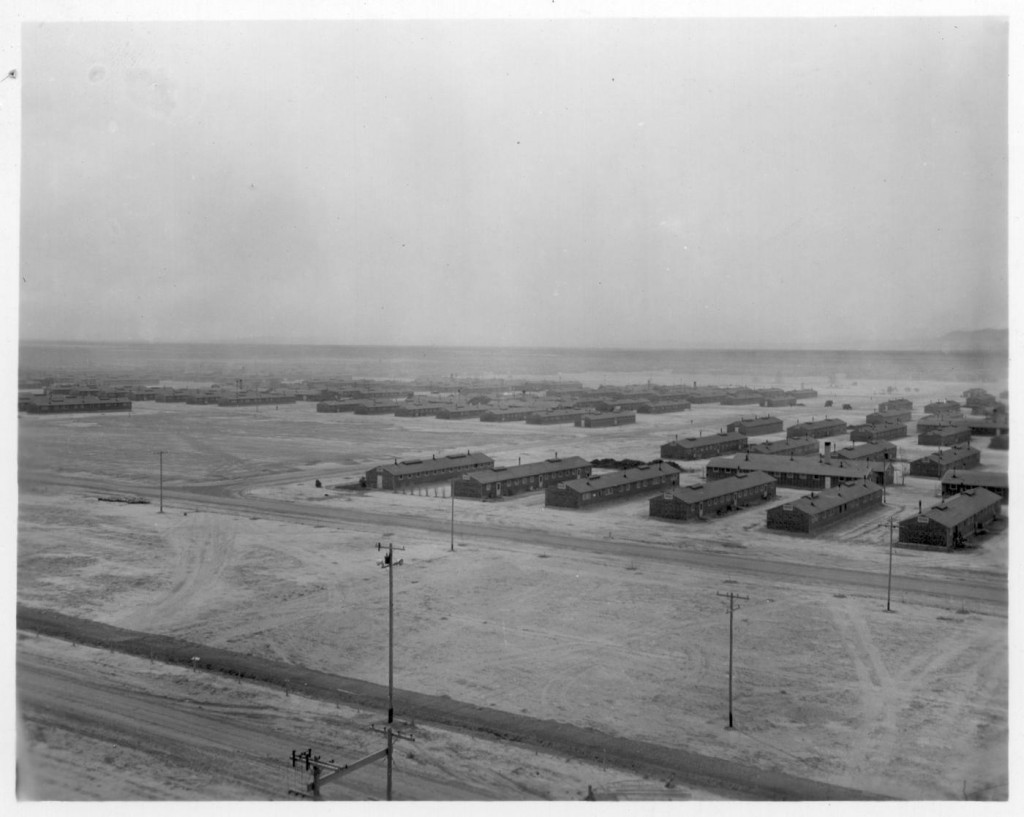
A panorama view of the Central Utah Relocation Center, taken from the water tower. -- Photographer: Stewart, Francis -- Topaz, Utah. 3/14/43
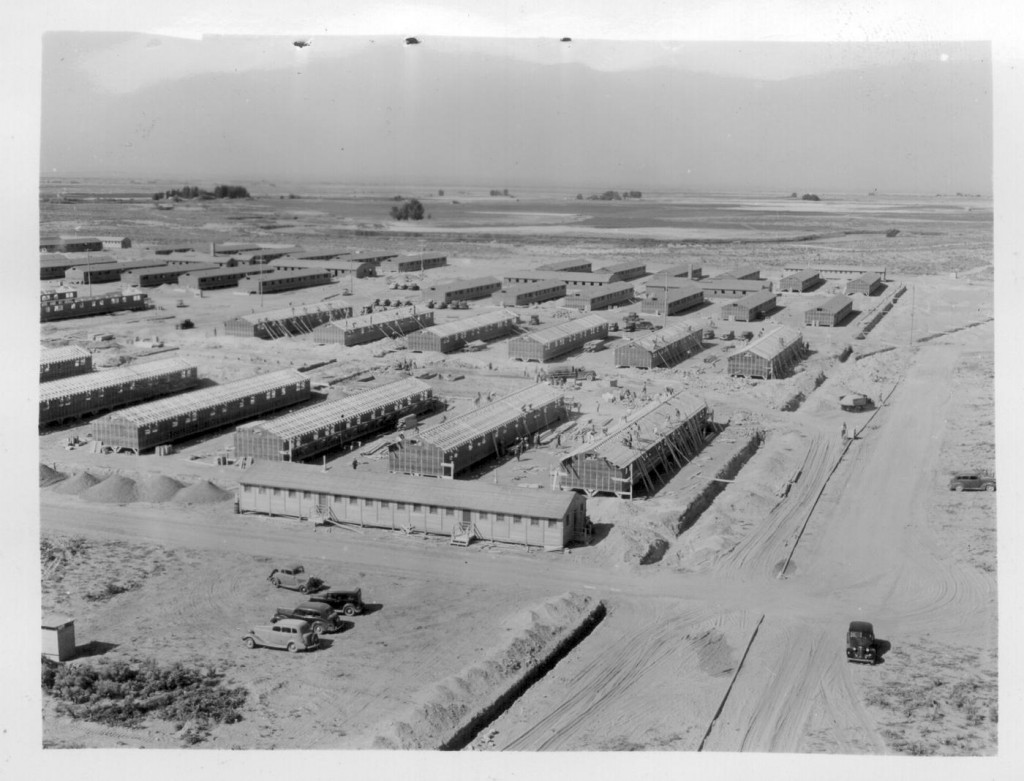
Eden, Idaho--A panorama view of the Minidoka War Relocation Authority center. This view, taken from the top of the water tower at the east end of the center, shows partially completed barracks. -- Photographer: Stewart, Francis -- Hunt, Idaho. 8/18/42

S/Sgt. Tatsumi Iwate, a Japanese American Infantryman, who bears a piece of Nazi shrapnel an inch deep in his brain despite two operations to remove it, is on furlough at the farm of his uncle, Tashikaza Wada, Rt. 1, Gill, Colorado, from Hammond General Hospital, Modesto, California, until September 17. He was wounded in France last October during the rescue of the Texas Lost Battalion by the Japanese American 442nd Combat Team. Formerly of Lomita, California, Sgt. Iwate, 28, entered service in February, 1942, a month before evacuation of Japanese Americans from the West Coast. Sgt. Iwate is keenly disappointed in his friend, 19-year-old Seiichi, now in a Justice Department Internment Camp after renouncing his American citizenship, and who has lost faith in his country. He wrote him a letter, which was made public by WRA, in which he expressed his surprise and disappointment in his actions and said I am an American to the last drop of my blood, and being a person of Japanese descent, I am aware of discrimination that is practiced by people who dare not see farther than the color of our skin, but I will continue to fight the enemy of my country be it foreign or domestic. Ready for either duty or discharge after 7 months of hospitalization, he says, I may be washed up as an Infantryman, but I'm still willing to tackle any assignment if they decide to keep me in the Army. -- Photographer: Mace, Charles E. -- Gill, Colorado. 7/14/45

